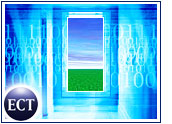
With a third of all lead generation budget dollars allocated to outsourced business-to-business teleservices providers, how do Best-in-Class organizations most effectively compensate their external vendors? Aberdeen survey respondents from more than 200 organizations provide rich detail regarding their preferences for how they prefer to model the fiscal relationship they build with their outsourced provider partner.
End users within Aberdeen’s research audience consider the following definitions for compensation models in the B2B teleservices industry:
- Retainer-based is a fixed dollar payment per month or quarter, often enhanced by performance-based variable compensation to the vendor and/or vendor’s individual staff members.
- Pay-per-appointment is an agreement to pay a fixed fee per accepted live meeting or conference call arranged, generally presented in programs of 20, 50 or other quantities of meetings. Time lines are usually open-ended.
- FTE-based (full-time equivalent) is a full or partial “rental” of outsourced vendor staff members who are dedicated to the customer’s program; compensation is arranged as a fixed rate per resource, sometimes with multiple echelons of talent available.
- Pay-per-lead requires a clear definition of “sales lead.” Vendors charge a fixed or graduated fee for units delivered and/or accepted.
- Pay-per-record costs are associated with the quantity of names or company targets touched, often stratified by the number of “sweeps,” call attempts or reaches.
- Hourly fee is similar to FTE-based, but with more flexibility regarding the identity of the caller, as well as with the activities undertaken by callers and program managers. This approach is highly popular with companies that wish to directly compare external fees with estimated costs of inside sales teams.
The Most Effective
Best-in-Class performance is most closely associated with companies that consider a retainer-based compensation model as the most effective methodology of collaborating with an outsourced B2B teleservices provider.
Across all six major year-over-year improvement metrics utilized by Aberdeen to determine Best-in-Class status, these retainer-friendly buyers outperformed all other preferred methodologies by significant percentages, with a minimum year-over-year improvement of 21 percent, compared with a maximum improvement of 10 percent in all other categories among all other preferred models.
High-performing organizations that prefer a retainer model express themselves regarding the levels of satisfaction they find among the various services provided by their outsourced B2B teleservices partners. They are most satisfied with reporting and metrics, followed by the overall quality of callers on staff in the external provider, and also with the overall quality of leads delivered. They are least satisfied with intelligence-gathering services. These retainer-based customers rate lower than average in overall satisfaction levels, indicating that their standards are high and they push harder for return on investment within a retainer model relationship.
Attention to Collaboration
Low-performing companies such as those that prefer a pay-per-hours compensation model express, ironically, the highest level of satisfaction with services provided, led by more easily calculated metrics such as quantity of leads and cost-per-lead. Marketing-driven teleservices investments, focused on pure cost and volume, lead organizations down a path to far worse overall sales performance, in comparison to the Best-in-Class results among retainer-based buyers that focus their energies instead on quality deliverables, quality messaging by outsourced staff, and a collaborative emphasis on reporting and non-CPM (cost per mille) types of vendor performance measurement.
Among the top-performing organizations that have expressed a reliance on retainer-based models, the focus is, not surprisingly, on lead quality and on regular interface between outsourced calling staff and the customer’s own sales organization. This attention to collaboration and quality remains a consistent theme in Aberdeen’s research in the industry.
Other Characteristics of the Best-in-Class
High-performing advocates of retainer-based compensation for outsourced B2B teleservices providers:
- tend to have used outsourced teleservices for longer than most other companies;
- devote an average of 36 percent of their entire lead generation budget to these relationships, compared with 33 percent of all other companies;
- are driven by the primary needs to increase the sales pipeline and lead quality;
- consider “decision-maker(s) interviewed and business pressures identified” to represent a qualified lead that is most acceptable to sales; and
- value intelligence-gathering, lead scoring, clean contact databases, and “vendor/client knowledge transfer” more highly than all other compensation-model fans.
Paying an outsourced B2B teleservices provider in a retainer model is aligned with Best-in-Class performance by sales organizations whose marketing colleagues introduce them to opportunities via external lead generation methodologies.
Among the relatively few options offered by the marketplace for payments, retainers map to the deeper and more effective needs of a vendor-client engagement: sourcing well-researched opportunities, professional representation and triangulation between the clients market and sales teams, with outsourced calling staff. Continued focus on lead quality, embedded business intelligence and professional program management will further enhance the value of the lead generation partnership.
Peter Ostrow is vice president and group director, customer management, for the Aberdeen Group. He can be reached at [email protected].





































Social Media
See all Social Media